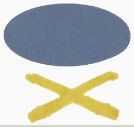Difference between revisions of "11th Machine Gun Company"
From Our Contribution
(→Company Personnel) |
|||
| (One intermediate revision by the same user not shown) | |||
| Line 5: | Line 5: | ||
| subheader = | | subheader = | ||
| − | | image = [[File:11th_MG_Company.jpg]] | + | | image = [[File:11th_MG_Company.jpg|250px]] |
| caption = Shoulder Patch | | caption = Shoulder Patch | ||
| image2 = [[File:11th_Machine_Gun_Company.jpg]] | | image2 = [[File:11th_Machine_Gun_Company.jpg]] | ||
| Line 22: | Line 22: | ||
In March 1918 the 11th Machine Gun Company, together with the 9th, 10th, and 23rd Machine Gun Companies formed the [[3rd Machine Gun Battalion]] and the battalion had an authorised strength of 46 officers and 890 other ranks, equipped with 64 Vickers medium machine guns. The battalion took part in the final stages of the war, seeing action during the Allied defensive operations during the German Spring Offensive and then the Allied Hundred Days Offensive, which finally brought an end to the war. The battalion was disbanded in mid-1919. | In March 1918 the 11th Machine Gun Company, together with the 9th, 10th, and 23rd Machine Gun Companies formed the [[3rd Machine Gun Battalion]] and the battalion had an authorised strength of 46 officers and 890 other ranks, equipped with 64 Vickers medium machine guns. The battalion took part in the final stages of the war, seeing action during the Allied defensive operations during the German Spring Offensive and then the Allied Hundred Days Offensive, which finally brought an end to the war. The battalion was disbanded in mid-1919. | ||
| − | + | ===Company Personnel=== | |
| + | * [[Thomas Albert Leslie Cheney]] 23 Nov 1916 - 16 Jan 1917 | ||
| + | * [[Martin Nicholas Cousens]] | ||
| + | * [[Eric Oswald Strang]] | ||
===Individual Honours=== | ===Individual Honours=== | ||
Latest revision as of 03:21, 7 March 2021
 Shoulder Patch | |
 Belt fed Vickers machine gun AWM P06493.001 | |
Contents
Brief History
Machine Gun Companies were units attached to the Brigade with the same numeric designation, i.e. the 11th Brigade. Later in the war they were absorbed into the 3rd Machine Gun Battalion when they were controlled by Divisional HQ.
They were equipped with the Vickers Medium Machine Gun. This weapon was served by a crew of three and was mounted on a tripod. It was not easily portable and so it was generally sited in a prepared fixed position. The Vickers had a distinctive appearance largely because of a cylindrical water jacket sleeve around the barrel which was designed to cool the barrel when firing at the rapid rate. They achieved continuous fire through the provision of ammunition in canvas belts.
The Vickers was renowned for its reliability and it could maintain blistering rates of fire for extended periods, thanks to its robust design and the fact that it was water-cooled. These weapons were capable of firing at extended ranges, out to 3,000 yards. They would be sited to provide flanking fire across a defensive front, often covering belts of barbed wire or other obstacles forcing the enemy to attack through their line of fire with devastating results; a tactic known as "enfilade fire".
In March 1918 the 11th Machine Gun Company, together with the 9th, 10th, and 23rd Machine Gun Companies formed the 3rd Machine Gun Battalion and the battalion had an authorised strength of 46 officers and 890 other ranks, equipped with 64 Vickers medium machine guns. The battalion took part in the final stages of the war, seeing action during the Allied defensive operations during the German Spring Offensive and then the Allied Hundred Days Offensive, which finally brought an end to the war. The battalion was disbanded in mid-1919.
Company Personnel
- Thomas Albert Leslie Cheney 23 Nov 1916 - 16 Jan 1917
- Martin Nicholas Cousens
- Eric Oswald Strang
Individual Honours
- 5 x Military Cross
- 8 x Military Medal
- 1 x Meritorious Service Medal
- 1 x Mentioned in Despatches
Notes